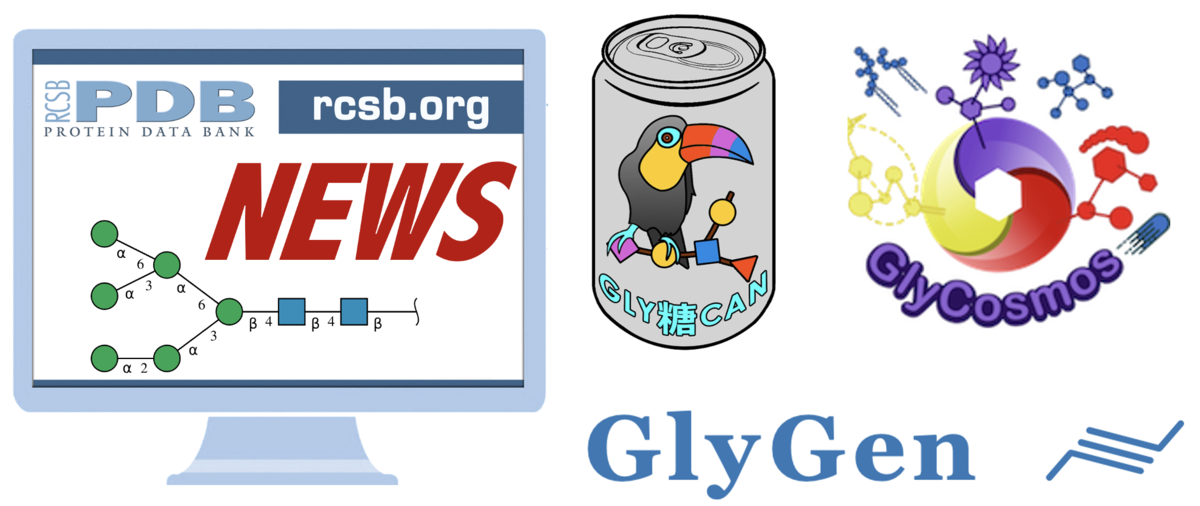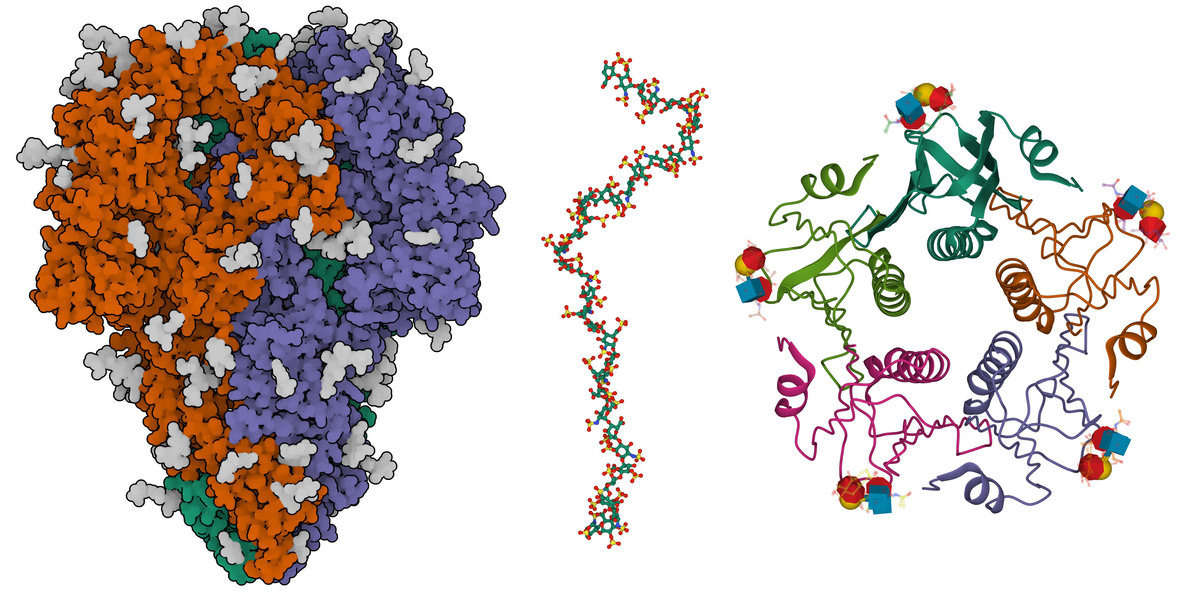News
Integrating PDB Data with Glycosylation Resources
07/20
 RCSB.org users can now access information from GlyTouCan, GlyCosmos, and GlyGen
RCSB.org users can now access information from GlyTouCan, GlyCosmos, and GlyGenRCSB PDB has integrated 3D structural information with glycosylation resources to promote interactions between the glycoscience and PDB communities.
Relevant PDB structures are now linked to individual data in
- GlyTouCan: the international glycan structure repository
- GlyCosmos: portal aiming to integrate the glycosciences with the life sciences, consisting of Standards, Repositories and Data Resources, providing information about genes, proteins, lipids, pathways and diseases.
- GlyGen: data integration and dissemination project for carbohydrate and glycoconjugate related data integrated from multiple international data sources
Data are accessible from individual Structure Summary pages.
 The Structure Summary page for PDB structure 6S7O (Cryo-EM structure of human oligosaccharyltransferase complex OST-A) links to corresponding pages at GlyTouCan, GlyCosmos, and GlyGen for Entity 11.
The Structure Summary page for PDB structure 6S7O (Cryo-EM structure of human oligosaccharyltransferase complex OST-A) links to corresponding pages at GlyTouCan, GlyCosmos, and GlyGen for Entity 11. This work builds upon other new improved features for exploring carbohydrate data in the PDB
 Examples of carbohydrates in the PDB: the coronavirus spike protein (left; 7kip) with many sites of glycosylation in gray; a fragment of heparin (center; 3irl), shown with a ball-and-stick representation; and cholera toxin bound to a small fragment of O-type blood glycans (right, 5elb), with the glycans shown using SNFG representation. More on carbohydrates at PDB-101.
Examples of carbohydrates in the PDB: the coronavirus spike protein (left; 7kip) with many sites of glycosylation in gray; a fragment of heparin (center; 3irl), shown with a ball-and-stick representation; and cholera toxin bound to a small fragment of O-type blood glycans (right, 5elb), with the glycans shown using SNFG representation. More on carbohydrates at PDB-101.











